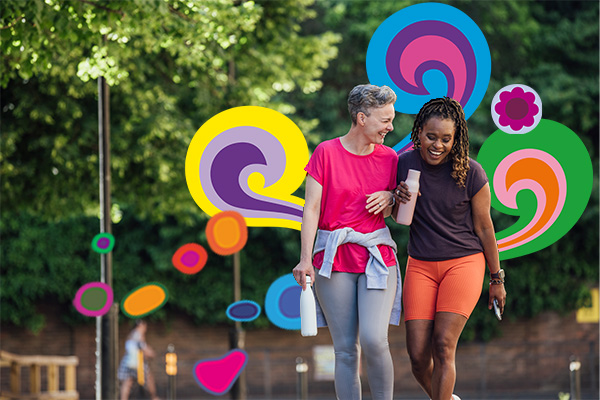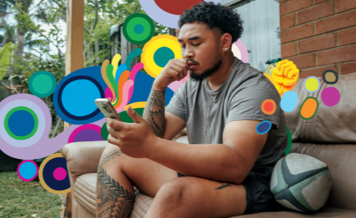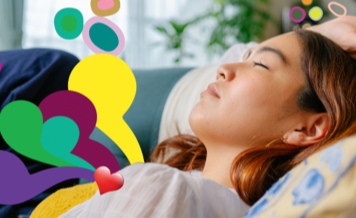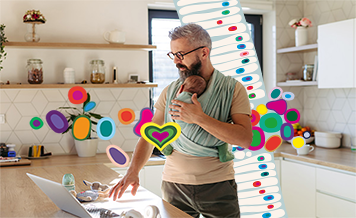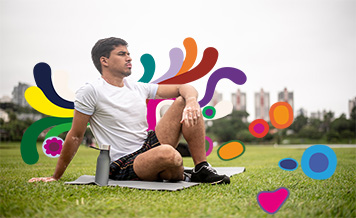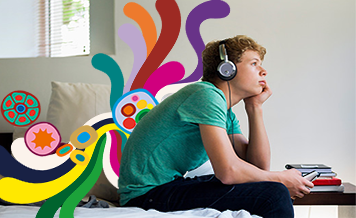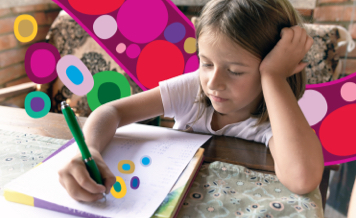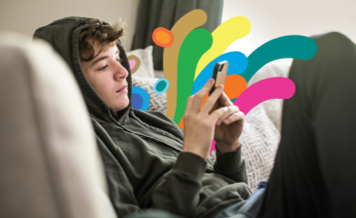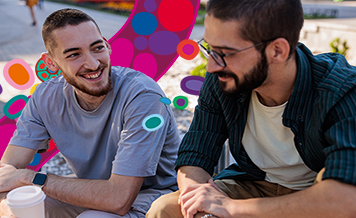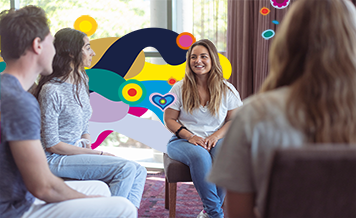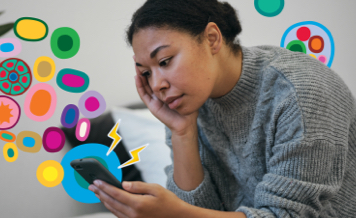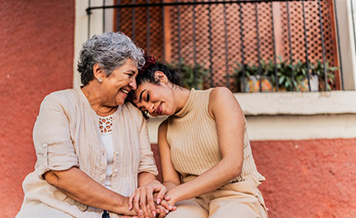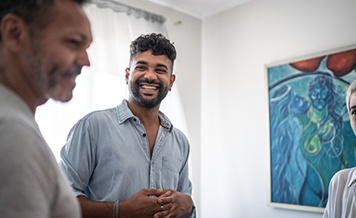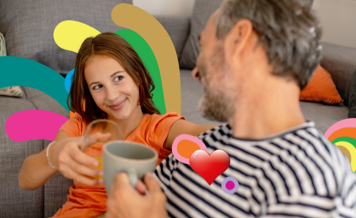Anxiety in teens: the difference between normal worries and anxiety
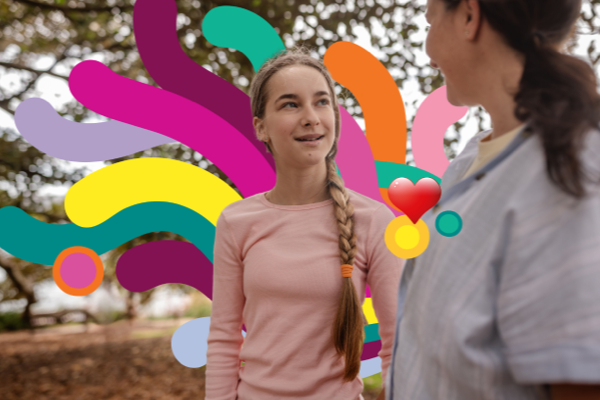
Anxiety is a normal reaction to life changes, new experiences or stressful situations.
Teenagers experience a lot of change in a short period of time and worries can be triggered by the start of high school, exams, puberty, friendships, social gatherings, social media, a casual job, learning to drive – it's a lot. Due to the amount of change they experience it’s natural for them to feel worried or anxious. Many teenagers develop coping strategies throughout their adolescence to deal with these feelings and new experiences.
It’s important to be able to recognise natural nerves, for example:
It’s normal for a teenager to worry about travelling to school on public transport if they’ve never done it before
It’s okay for a teenager to feel apprehension about a new high school because it’s a big change
It’s natural for a teenager to feel nervous about learning to drive because it’s a huge responsibility
Try to contextualise each situation and put yourself in their shoes – remember, you were a teenager once – and empathise with how they may feel.
What if anxiety becomes overwhelming for a teenager?
For some teenagers, intense feelings or fears can become overwhelming and may occur for no apparent reason due to the amount of change that happens in their life. They may experience unbearable anxiety that makes it hard to get through the day. Anxiety conditions may be crippling to a teenager's life if they don’t get the support they need.
What do teenagers with a lot of anxiety feel?
Teenagers who experience a lot of anxiety tend to feel ‘on edge’ or worried most of the time. They feel overwhelmed, frightened (particularly when having to face certain objects, situations or events), dread (that something bad is going to happen) or panicked. Often their anxiety might increase when they’re asked to do a new task.
Some teenagers also experience:
upsetting dreams or flashbacks to an event
intrusive or unwanted thoughts
Teenagers also experience a range of physical symptoms when they’re anxious:
elevated heart rate
butterflies in the stomach
muscle tension
shaking hands
nausea
These physical symptoms might even make them worry that they have an undiagnosed medical problem, which can make their anxiety worse.

24/7 Medibank Mental Health Support
Medibank health insurance members can chat to a mental health professional about how they feel and ask questions about a range of mental health concerns for themselves or a loved one and get guidance on what they can do next. Chat online or call 1800 644 325 anytime of the day or night, 7 days a week at no extra cost.~
What are the different types of anxiety in teenagers?
There are six types of anxiety, each with different signs and symptoms.
1. Generalised anxiety disorder (GAD)
A teenager may feel anxious most days and worries about everyday situations such as school, work, relationships or health for a period of six months or more.
2. Obsessive compulsive disorder (OCD)
A teenager experiences unwanted and intrusive thoughts and fears (obsessions) that leave them feeling overly anxious. To manage these anxious thoughts they begin to do things, or use compulsions to cope. Even though they often know that these thoughts are irrational, the obsessions return often and the compulsions are hard to resist. For example, a fear of germs can lead to constant hand washing.
3. Panic disorder
A teenager has regular panic attacks for more than a month. The panic attacks are periods of intense fear or extreme anxiety that happen suddenly or when there is no sign of danger. The physical symptoms of a panic attack include:
sweating
feeling short of breath
pounding heart
dry mouth
a belief that they’re dying (when they’re not)
a feeling that they’re about to collapse
4. Post-traumatic stress disorder (PTSD)
PTSD can happen after a teenager experiences a traumatic event, for example, an assault, an accident or disaster. A teenager may experience:
difficulty relaxing
nightmares
flashbacks
They avoid situations that remind them of the event
5. Social phobia
A teenager has an intense fear of being:
criticised
embarrassed
humiliated
It's common for teenagers with social phobias to be overwhelmed by everyday situations, such as public speaking, eating in public, being assertive at school or making small talk.
6. Specific phobias
A teenager may feel anxious about a particular object or situation, like going near animals, going to a social event, or visiting a nurse or doctor. Often, teenagers with specific phobias will go to great lengths to avoid the situation. Some common phobias include animals, insects, heights, and blood.
Many teenagers experience more than one type of anxiety and may experience depression as well.
Where to get help
If your life or someone else’s is in danger, call 000 immediately.
If you’re in distress and need help, call Lifeline on 13 11 14 for 24/7 crisis support.
For non-emergency support, your GP or regular health practitioner is often the best place to start. They will be able to assess your individual situation and recommend the best next steps for your recovery.
Medibank health insurance members can chat to a mental health professional about how they feel and ask questions about a range of mental health concerns for themselves or a loved one and get guidance on what they can do next. Chat online or call 1800 644 325 anytime of the day or night, 7 days a week at no extra cost.~
Remember that help is always available, no matter the situation.
This article was written in consultation with Beyond Blue. Medibank and Beyond Blue are working together to empower all people in Australia to be better connected with knowledge, resources and support to improve their mental health and wellbeing. Visit the Beyond Blue website for more information about anxiety.
How can we help?
I want to know how my cover supports mental health
I need help and want to talk
Related articles
Things you need to know
~Some referred services may involve out of pocket costs and waiting periods may apply.
While we hope you find this information helpful, please note that it is general in nature. It is not health advice, and is not tailored to meet your individual health needs. You should always consult a trusted health professional before making decisions about your health care. While we have prepared the information carefully, we can’t guarantee that it is accurate, complete or up-to-date. And while we may mention goods or services provided by others, we aren’t specifically endorsing them and can’t accept responsibility for them. For these reasons we are unable to accept responsibility for any loss that may be sustained from acting on this information (subject to applicable consumer guarantees).
